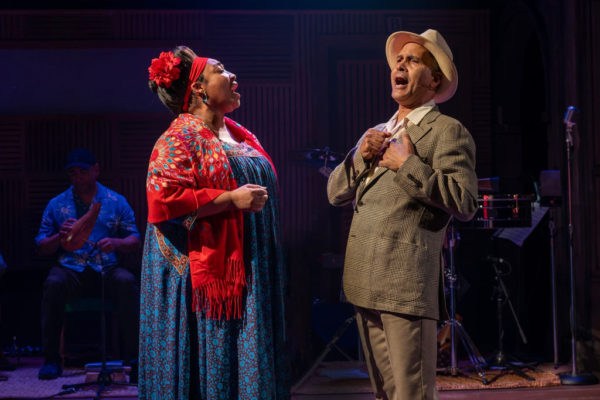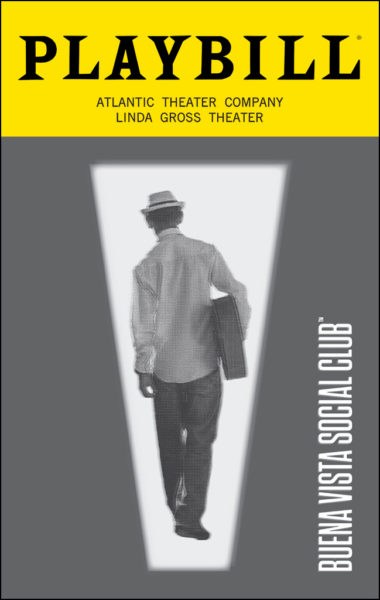Buena Vista Social Club Revisited

A musical brings to the stage the real story of those retired musicians who had a long career in Cuba but were mostly unknown outside the island.
HAVANA TIMES – It’s a story that began twenty-seven years ago. In an old building in Old Havana lived Ibrahim Ferrer, a musician who gained his reputation in the 1940s and 1950s but was already retired by then. He was 70 years old, making a living as a shoe shiner and magazine seller. One afternoon in March 1996, Juan de Marcos Gonzalez knocked on his door asking Ferrer to come with him to a recording studio. And off they went.
In the EGREM studio, Ferrer met old acquaintances, several of whom were part of the cream of traditional Cuban music: singer and clarinetist Compay Segundo; Grammy-winning singer Omara Portuondo; renowned pianist Ruben Gonzalez; and Eliades Ochoa, who, at 49, was the youngest in the group.
The reunion of musicians coincided that day with that of renowned blues guitarist Ry Cooder who was visiting the studio. Cooder had played with famous artists and groups like the Rolling Stones, Van Morrison, and Bob Dylan. Upon hearing these veterans, Cooder was captivated. He and Nick Gold, head of the British music label World Circuit, had long been interested in a project by musician Juan de Marcos Gonzalez. It involved bringing together old legends of Cuban music under the name Afro-Cuban All Stars to revive a long-forgotten style: the Cuban son, which, after the revolution’s triumph in 1959, had been considered “music for elders.”
On that occasion, Ferrer performed “Candela,” a song very popular in its time. Cooder asked him to record the song with him and proposed producing an album with all these veteran figures. The project was dubbed the Buena Vista Social Club, the same name as one of the old clubs closed by the Castro regime. A few days later, recording sessions for the album began.
Despite being entirely in Spanish, Buena Vista Social Club became an essential album in both Latin and non-Latin households. Eight million copies were sold worldwide, and it won the Grammy for Best Tropical Latin Performance. It was released the same year as Radiohead’s “OK Computer,” Janet Jackson’s “The Velvet Rope,” and Bob Dylan’s “Time Out of Mind.” Nevertheless, Buena Vista Social Club was the least likely musical phenomenon of 1997. The documentary filmed by the German filmmaker Win Wenders, which captured excerpts from concerts, recording sessions, interviews with musicians, and numerous scenes shot in Havana, contributed to its success.
The opportunity to take a second look at their past
Now, the real story has reached the stage through the musical “Buena Vista Social Club TM.” The scriptwriter is Marco Ramirez, a Cuban-American known for “The Royale,” a play about the history of racism in the United States produced by the Lincoln Center. With this work, he won the Drama Desk and Outer Critics Circle awards. Ramírez has also been nominated for an Emmy Award, and his television work includes “Orange is the New Black” and “La Maquina,” starring Gael García Bernal and Diego Luna.
The staging was entrusted to Kenyan-American Saheem Ali, associate artistic director of the Public Theater, one of Off-Broadway’s most important venues. He received the 2023 Obie Award for “Sustained Excellence” as a Director, in addition to Drama Desk and Lucille Nortel nominations for his direction of “Fat Ham.” David Yazbek, one of Broadway’s leading composers and lyricists, serves as the creative consultant for the production.
The choreography is by the married couple Patricia Delgado and Justin Peck. Delgado, a Cuban from Miami, was the principal dancer for the Miami City Ballet and associate choreographer for Steven Spielberg’s film “West Side Story.” She was also the associate producer for the Broadway revival of “West Side Story” in 2020. Justin Peck is a choreographer, director, filmmaker, and dancer, currently the resident choreographer of the New York City Ballet. He choreographed the Broadway revival of “Carousel” in 2018, which won a Tony Award. Peck also worked on Spielberg’s “West Side Story” and Bradley Cooper’s “Maestro.” His ballet “Rodeo: Four Dance Episodes” received a Bessie Award and is part of the New York City Ballet’s repertoire.
The San Juan Daily Star published a report on Buena Vista Social Club TM by Brian Selbert. According to the report, the project began a few years ago when a producer with the theatrical rights to the album approached Marco Ramirez. “The first question,” Ramírez asked the journalist after a rehearsal of the play, was: “Do you know this album? And for a Cuban kid who grew up just when the album came out, the answer was: Of course. The next question was: Do you think there’s a play here?”
Finding an answer to that question led Ramírez to travel to Cuba, where he interviewed some of the surviving participants of the famous album. “It was about finding the emotional truth at the center,” he told the journalist. “For me, ultimately, it’s about a group of people who were given a magical opportunity to take a second look at their past, do something well, or simply relive their youth.”
Dialogues in English and songs in Spanish
As Selbert notes, the musical’s story presents the recording of the mythical album but also recreates, through flashbacks, Cuba in the 1950s, the youth of the musicians. This is “the emotional truth behind the factual truth,” said Ramirez. “Everything is inspired by real events and people, but I’m definitely taking a lot of liberties to tell the best possible story.”
Where the creators haven’t taken liberties is in the music. The dialogues are in English, but the songs, taken from the broader catalog of Buena Vista Social Club members, remain in Spanish. “The old songs awaken old feelings,” says a character in the musical. “Given these lyrics, given the moods evoked by this music, what story can emerge?” Ramirez commented. “At first, I felt like I was communicating with the composers, who have been dead for 80 years or more. I felt like my collaborators were ghosts.”
As the journalist mentions, casting was a double challenge because the flashback structure required finding two people (an older and a younger one) to play each of the Buena Vista personalities at different stages of their lives. “We had to find artists who could sing and play like the originals,” said Saheem Ali. Ramírez adds that the common denominator is that everyone has a connection to the album. This comes through their Cuban grandparents, who played the songs in their Miami homes, so when the album came out, they already knew them. For several generations of a family, it was exciting to talk together about a new album. “The bittersweet irony is that they felt nostalgic for Havana, and now I listen to this album and feel nostalgic for them,” said Ramirez.
Mel Seme, born in Camagüey and the son of Haitian parents, plays the older Ibrahim Ferrer, who was shining shoes for money when recruited to lend his golden voice to the Buena Vista Social Club recordings. Seme was a teenager in Cuba when the album was released. “It became popular first outside of Cuba,” he said. “But then we fell in love with this music again, and it became the music many of us aspired to play.” He studied Symphonic Percussion and, after graduating, was part of the Camagüey and National Symphony Orchestras. He then moved to Europe, where he gradually built a career as a drummer, guitarist, singer, and band director. As his acting experience was limited to commercials, Seme initially told the musical team that maybe he wasn’t the person they were looking for.
Honoring what music means to Cubans
“I felt like a teenager again, learning a new skill,” he said. Echoing a phrase used by many other cast members, he expresses that playing Ferrer is a “great responsibility,” but a deep connection with the singer helped him. “Although my story is not exactly like his, I also found a bit of success late in life,” he said. “I always saw Ibrahim as a role model. No matter how late in life his chance came, he did it with a lot of grace.”
Renesito Avich plays Eliades Ochoa, the musician with the cowboy hat who brought a more rural sound to the original Buena Vista group. According to him, music has been the backdrop of his entire life. He was born in Santiago de Cuba, Ochoa’s hometown, and even met him once. Avich, a successful musician specializing in playing the tres guitar, is also a novice in acting. He claims that he feels the musical “really honors what music means to Cubans like me.”
Among the non-Cuban cast members is Natalie Venetia Belcon, a Broadway actress who does not speak Spanish. But when preparing for an audition for the challenging role of Omara Portuondo, the Buena Vista diva, the songs generated a flood of memories in her of her musician parents from Trinidad. Kenya Browne, a Mexican-born singer who plays the young Omara, knew Cuban music as something her grandmother used to sing. Her mother told her that “Dos gardenias,” a bolero she sings in the show, was a song her great-grandmother often sang.
Peck and Delgado, whose parents were born in Cuba, have loved the album for a long time. In fact, they chose a Buena Vista song, “Pueblo Nuevo,” for the first dance at their wedding. As soon as they learned about the musical being prepared, they asked to get involved. Peck recalled the experience of walking through Havana, listening to music, and watching people move to its rhythm. “And then, as soon as that sound starts to fade, there’s another sound in the distance brushing against it,” he said. “That energy is something we want to convey.”
Buena Vista Social Club TM can be seen at the Linda Gross Theater (330 West 20th Street) in New York. Although the play was originally scheduled to end on December 31, performances have been extended until January 7.






